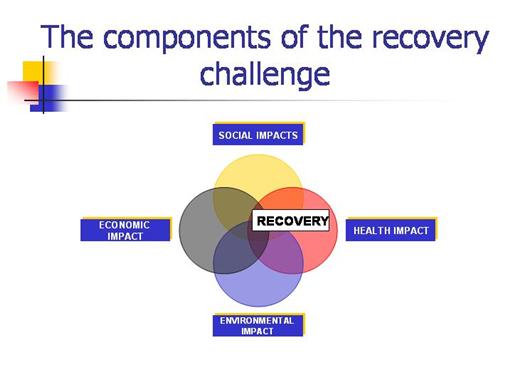| front |1 |2 |3 |4 |5 |6 |7 |8 |9 |10 |11 |12 |13 |14 |15 |16 |17 |18 |19 |20 |review |
 |
Recovery encompasses all those
activities designed to address the enduring human, physical,
environmental, social and economic consequences of major disasters/
incidents. Its objective is to rebuild, restore, and rehabilitate the
community and all possible disasters impacts.
Recovery means that the crises
are resolved. The recovery phase begins at the earliest opportunity
after the onset of the disaster, running simultaneously with the
response phase and continues until disruption has been rectified,
demands on services have returned to normal levels, and the needs of
those affected (directly or indirectly) have been met. The main
component of the recovery are:
-Recovery
of social impact
-Recovery
of economic impact
-Recovery
of health impact
-Recovery
of environmental impact
The common objectives of
recovery (and response) are:
-saving and protecting life;
-relieving suffering;
-containing the emergency limiting its escalation or spread;
-providing the public with warnings, advice and information;
-protecting the health and safety of personnel;
-safeguarding the environment;
protecting property;
-maintaining normal services at an appropriate level;
-promoting and facilitating self-help in the community;
-facilitating the physical, social, economic and psychological recovery of
the community.
From a health perspective the
crises are resolved when essential health systems have been repaired and
rebuilt, when the major health needs of the most vulnerable populations
receive attention and when the health-care environment is secured for
both patients and health personnel. To achieve this, a health sector
recovery plan is essential. Such plans focus on essential lifelines to
those in need, the restoration of services in primary health centres and
hospitals, rehabilitation of laboratory services, disease surveillance
and public health programmes.
|